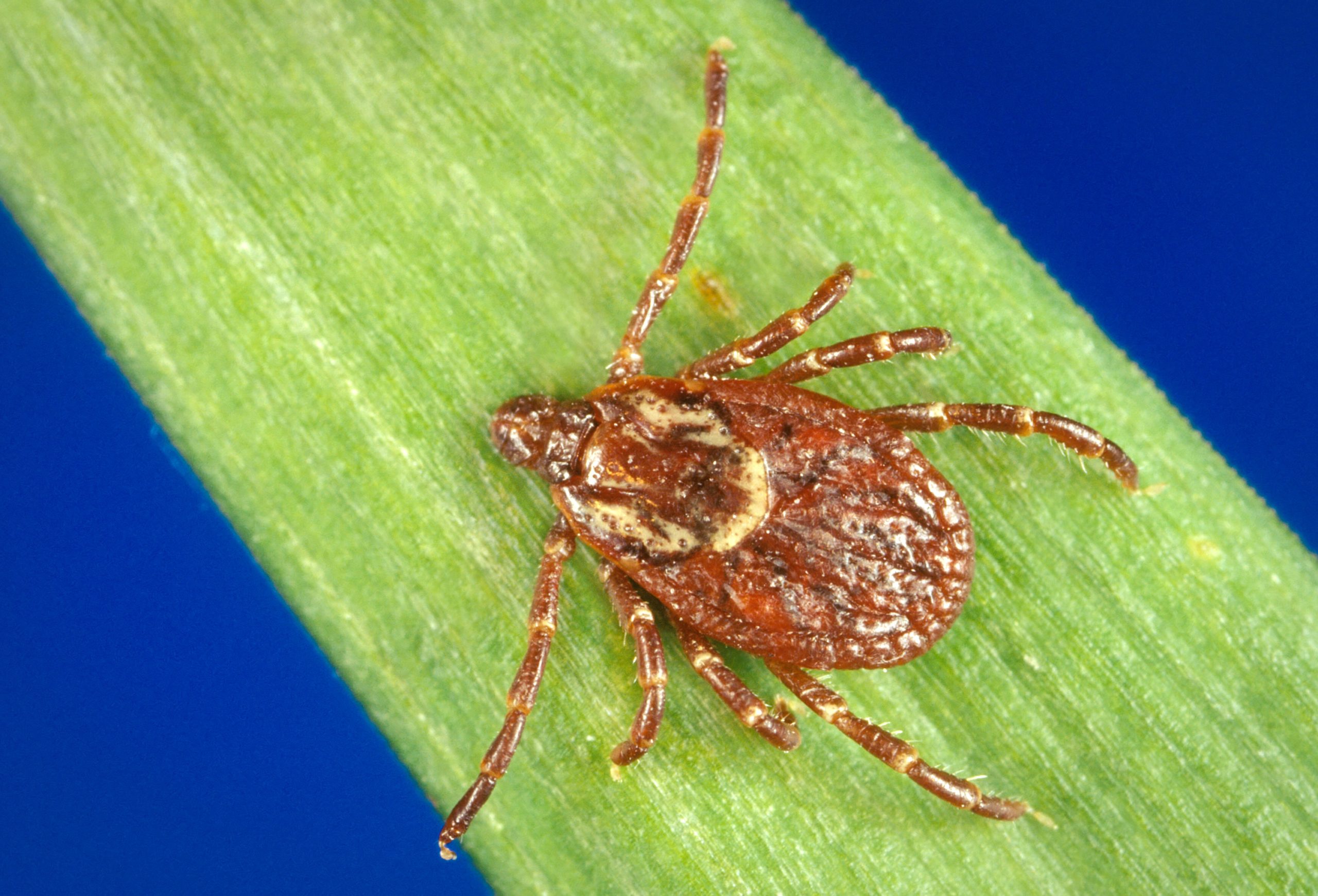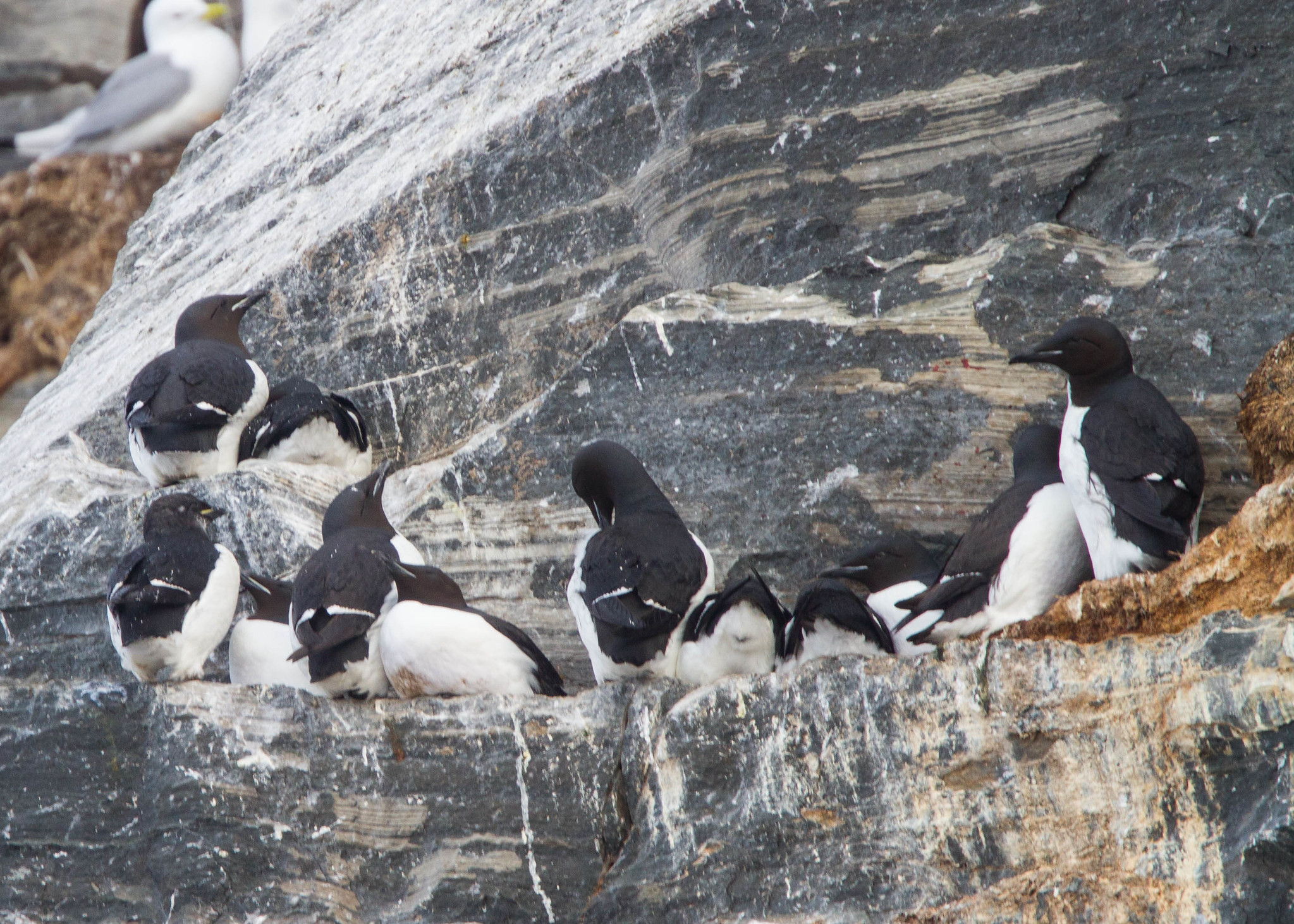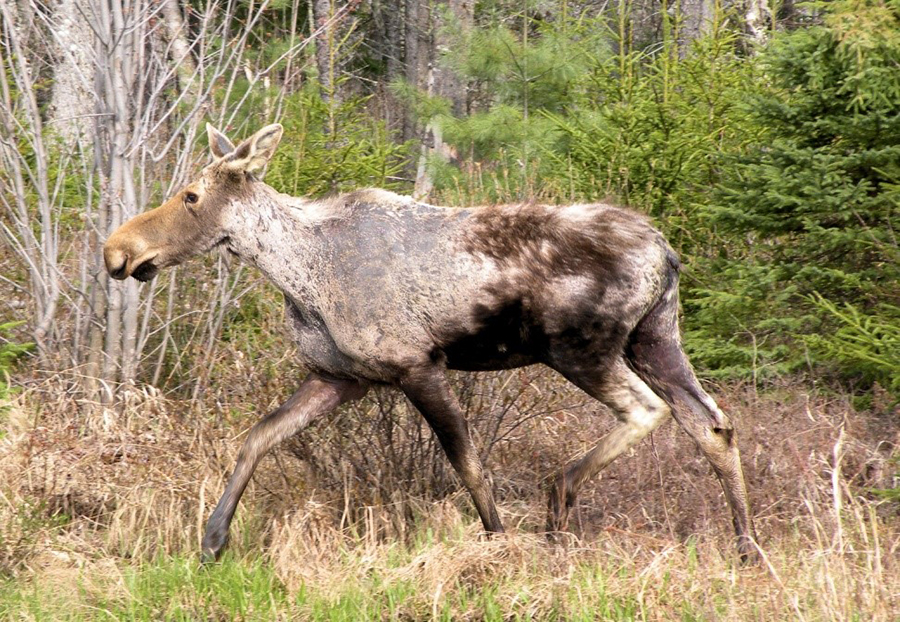Ticks — and tick-borne risks — are creeping north to the Arctic as the climate warms
While some ticks are native to Alaska, new arrivals and warmer temperatures mean they pose a growing threat to humans and wildlife.

(James Gathany / CDC)
The warming climate in Alaska and across the circumpolar North is creating new health and safety risks for people, animals and ecosystems. This piece is the part of a series that explores zoonotic diseases and other hazards emerging in a warming and thawing Alaska.
One warm June day, Joey Ausel found an odd speck on the carpet of her Anchorage home that led to what she said was a “freak-out.”
“When I picked it up it was soft, like a grape,” she said. “Then it moved, and I was like, Oh my gosh.”
It was a tick engorged with blood, a new encounter for a lifelong Alaskan.
“I’d never actually seen a tick in person,” she said. She stripped the linens in her house, did loads of laundry, hunted down some anti-tick products for her family’s pets — not an easy task in Anchorage, she said — and turned over the specimen to the Alaska Department of Environmental Conservation, where she happens to work.
As startling as that discovery was, ticks are not actually new to Alaska. But now, as the warming global climate pushes the range of disease-carrying parasites north, ticks are becoming more common in Alaska and elsewhere in high latitudes — and so is the risk of tick-borne diseases.
Of the 1,190 tick Alaska records collected over a 110-year period, more than half come from the last 10 years, according to a new baseline study completed by university and state scientists.
In addition to the six types of ticks historically found in Alaska — on rabbits and hare, birds and small mammals like voles — several non-native species have shown up since 2007, according to the study.
[The coming diseases: As the climate warms, Alaska faces new threats from zoonotic illnesses]
So far, two of those introduced species — the American dog tick and the brown dog tick — have evidence that they may be establishing in Alaska.
Micah Hahn, an assistant professor at the University of Alaska Anchorage’s Institute of Circumpolar Health and lead author of the baseline study, has become one of the point people for Alaska tick knowledge. It was not a role she expected when she came to UAA in 2017.
Before taking her Anchorage job, she had worked at the Centers for Disease Control as an epidemiologist focusing on the relationship between climate change and vector-borne diseases, with a big focus on ticks and the disease they carry. Like many, she believed that ticks were a non-factor in Alaska.
“When I got up here, I assumed I’m done studying ticks, I’ll start studying something else because I’m in Alaska right now,” she said.
Instead, her tick studies have kicked into high gear. She and colleagues at the University of Alaska Fairbanks, the Alaska Department of Fish and Game and the Alaska Department of Environmental Conservation have become expert tick hunters.
In summer, Hahn and her colleagues comb wooded areas with fringed sheets to try to pick up whatever specimens may be lurking on plants or on the forest floor. They trap small mammals to check their fur for burrowing ticks. They examine the tick discoveries in the laboratory.
And they get input from the public, for whom awareness of ticks is growing. “A lot of Alaskans have told me they’re more scared of ticks than they are of bears,” Hahn said jokingly.
The Submit-a-Tick program operated by the office of the Alaska State Veterinarian collects and categorizes ticks discovered by citizens — including the blood-fattened tick that Ausel found on her carpeted floor.
More ticks are likely to arrive in Alaska and become entrenched, Hahn said. As with the American dog tick and brown dog tick, the entry will likely be from people and dogs traveling out of state, she said.
The key factor is how climate change will affect the persistence of the introduced ticks. Alaska was once too cold for these non-native species to survive long enough to reproduce, but that may no longer the case, she said.
As tick presence increases, health officials are on the watch for the diseases they spread. The main one in Alaska is tularemia, sometimes called “rabbit fever.” Tularemia has a long history in Alaska; it can be spread by hare-infesting ticks that have long been present, or even from direct exposure to hares or other small mammals, making it a concern for hunters and trappers.
Outbreaks among pets occur each summer, but the last recorded human case was in 2015, according to state health records. However, records are imperfect. Symptoms, which can include fever, chills and general fatigue, are sometimes vague, so cases can go unidentified and unreported.
To date, Lyme disease, a well-known and particularly debilitating tick-borne disease prevalent elsewhere in the United States, has not emerged in Alaska. Other parts of the Arctic have been less fortunate.
The first Arctic discovery of ticks carrying the bacteria that causes Lyme disease was in seabirds in northern Norway. “This is the northernmost finding of this pathogen ever reported,” said the 2007 study reporting that discovery, published in the journal Vector-Borne and Zoonotic Diseases.
Another tick discovery in Svalbard in Arctic Norway is firmly associated with warming temperatures. There, ticks were discovered with increasing frequency on cliff-nesting Brünnich’s guillemots, also known as thick-billed murres, according to a study by Sebastian Deschamps of the Norwegian Polar Institute. Observations through 2012 showed increasing infestations, and Deschamps calculated that a 1-degree Celsius increase in winter temperatures correlated to a 5 percent increase in tick infestations of these nesting seabirds — and at that rate, 45 percent of them could be infested by the end of the century.

A different Arctic discovery, described in a 2018 study, was of a tick carrying a pathogen that causes an emerging inflammatory syndrome, neoehrlichiosis, that tends to affect people with compromised immune or blood systems. The pathogen-carrying ticks were found on dogs, cats and plants as far north as Latitude 68; it was the farthest-north discovery of that tick-borne bacterium, said the study, by Swedish and Norwegian scientists.
Tick problems for people have skyrocketed in the Komi region of Siberia, with the change attributed to rising temperatures and expanded range for the parasites. From 1992 to 2011, incidents of tick bites of humans increased 23-fold, and the tick-bite season expanded from four to six months, Russian scientists reported in a study published in the International Journal of Circumpolar Health. The incidences of tick-borne encephalitis also grew dramatically, by more than six-fold in a similar period, the scientists reported.
Another dramatic increase was reported in the Sakha Republic of northern Russia, where there were only isolated cases of tick bites in 2000 but incidents rose 40-fold by 2018, according to a recent study led by the Yakut Scientific Research Institute of Agriculture. Once limited to the republic’s southern districts, tick bites are now reported in all 21 Sakha districts, said the study, published in February.
For Alaska and other far-north regions of North America, the most ominous tick development may not be linked to any disease.
Infestations of the winter tick, the species Dermacentor albipictus, have devastated moose populations in New England, and a warming climate producing shorter winters have gotten the blame. The species’ range has expanded to the north and west, reaching areas of Canada near the Alaska border.
This species of tick latches onto moose hosts for entire winters, feeding on blood that allows the parasites to develop from larvae to adult. There can be tens of thousands on a single animal, even approaching 100,000. Blood-engorged ticks can swell to the size of grapes.
Because tick-infested moose scratch away their hair, sometimes leaving just patches of white wisps, they are sometimes called “ghost moose.” With their thinned coats, those moose lose their ability to keep warm, are too stressed to eat properly and lose enough blood to become anemic. Most vulnerable are the youngest moose; infestations can kill calves.
In New England, one study led by biologists at the University of New Hampshire found a 70 percent death rate for calves over a three year period.

(Dan Bergeron / New Hampshire Fish and Game Department)
Because of the way the winter tick’s life cycle works, climate change has become a big factor in the northward spread.
Adult females drop off host animals in spring and lay eggs in summer. Eggs hatch into larvae that, in the fall, climb up plants for a period called “questing.” When moose and other mammals brush against the larva-laden plants, the questing ticks attach to their hosts and stay there through the winter, developing into adulthood, when the cycle begins again.
The later the arrival of winter and its tick-killing snows, the longer the questing period becomes — and the greater the opportunity that ticks can attach to hosts.
Winter ticks have not yet been documented in Alaska, but they are now established in Canada’s Yukon and Northwest Territories. Ghost moose have been spotted as far north as Sahtu region of the Northwest Territories, which reaches up to the Arctic Circle
In Yukon, the winter tick is the subject of groundbreaking research by University of Toronto biologist Emily Chereny.
Chenery, whose PhD researches focused on the winter tick, said she wasn’t sure at first about studying such a maligned creature. “They don’t have a good rap,” she said.
She found the ticks a compelling research subject, however. “I think we have to separate the idea of ticks on us as humans, which is unpleasant, and their role in the environment,” she said.
In 2018, she searched Yukon areas to find places most likely to be infested with the winter tick — which she believes was brought north by transplanted elk. Most work in the past has focused on adult ticks sucking the blood of mammals, but Chenery looked for the larvae before they latch onto their hosts. “These little guys are so tiny. It’s like looking for a needle in a haystack,” she said.
She hit scientific pay dirt in Yukon’s Ibex Valley and returned the following year for late-summer and fall tick-collections, using the sheet-dragging method. She and her colleagues made what were likely the first such collections of moose tick larvae north of Latitude 60 – with some spots holding thousands of larvae per 100 square meters, according to a study she published in the journal Parasites & Vectors. In all, her group collected more than 135,000 individual larvae in 2019, mostly on grassy south-facing slopes, according to the study.
To better understand what animals are being infested, Chenery has used remote cameras in the areas she knows held lots of tick larvae. She is also getting research help from Yukon hunters. Through the Yukon Winter Tick Monitoring Project, a collaboration with the Yukon government and other stakeholders, she gets hides of moose and other animals that can be combed for ticks. The project also collects Yukoners’ observations — whether of ticks or of moose with suspicious hair loss.
Though winter ticks attach to hosts other than moose, deer and elk appear to have evolved with those parasites and are capable of grooming them away, Chenery said. Not so with moose, however.
Eventually, biologists fear, a hitchhiking winter tick will move across the Canadian border into Alaska, threatening the moose populations that rural residents hunt for food.
Past research led by Alaska Department of Fish and Game biologist Randall Zarnke proved that winter ticks can successfully lay eggs and that those eggs can survive in Alaska. His study, published in 1990, was based on experiments with imported winter ticks raised at three Alaska sites; results showed that “establishment of winter ticks in Alaska following accidental translocation is possible,” but several factors had prevented that from happening.
Among the likely factors keeping those moose-infesting ticks away, the study said: Alaska’s long winters.
Winters in Alaska and elsewhere in the North are now shorter and milder. Don’t blame the ticks for that, Chenery said.
“I always try not to vilify ticks,” she said. “Really, the problem is what humans are going to the environment.”
This story was supported by the Society of Environmental Journalists’ Fund for Environmental Journalism and the International Women’s Media Foundation Howard Buffett Fund for Women Journalists.


